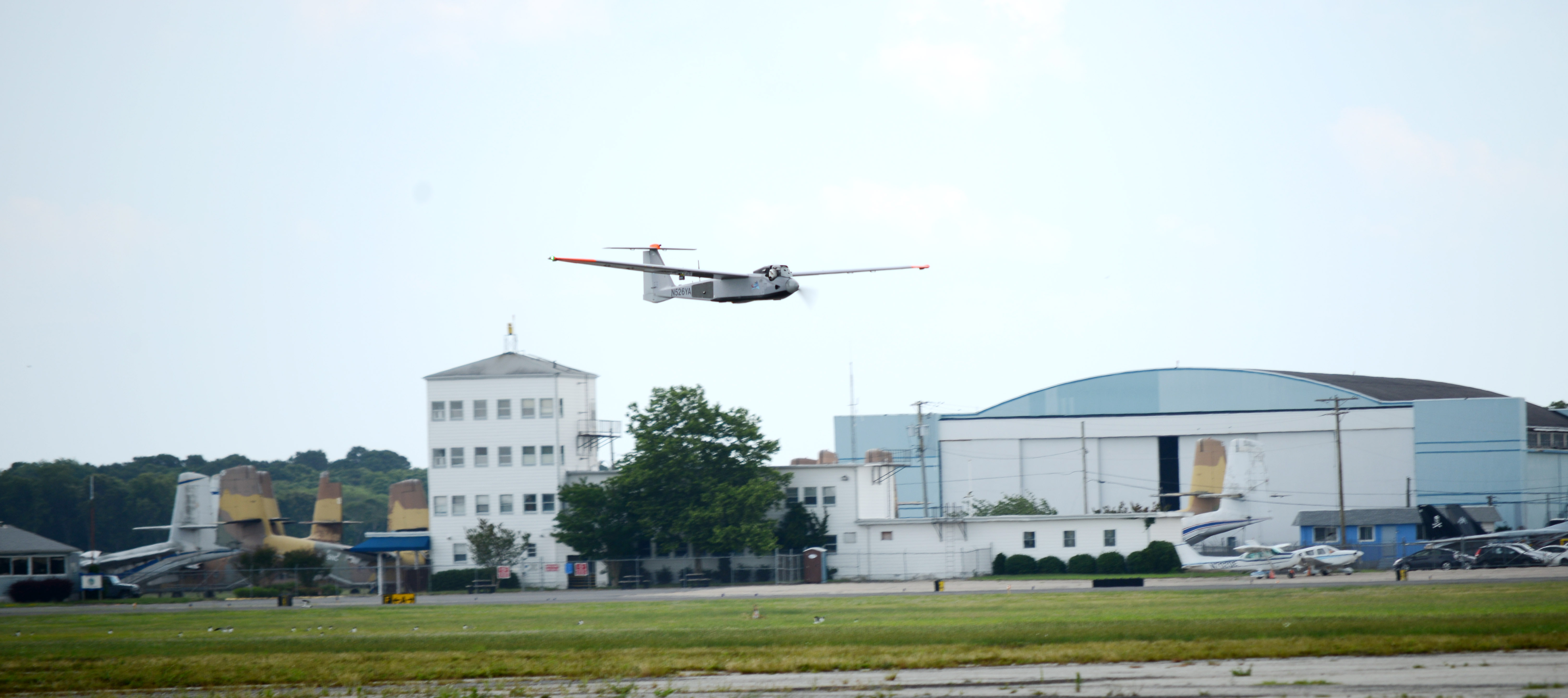Researchers test avoidance technology in unmanned aircraft at Cape May Airport with Rutgers partners

Unmanned aircraft researchers associated with the Mid-Atlantic Aviation Partnership of Virginia Tech and Rutgers University recently tested new technology designed to prevent collisions with other aircraft.
The flights from Cape May County Airport in New Jersey involved a fixed-wing aircraft that stayed within sight of ground observers. The effort represents the partnership’s first flights in New Jersey.
“The development of sense-and-avoidance technology is a critical path toward the safe introduction of unmanned aircraft systems into the nation’s airspace,” said David Yoel, chief executive officer of American Aerospace Technologies Inc., a Pennsylvania-based company that provided and piloted the test vehicle. “The aircraft was equipped with sensing equipment that allowed it to monitor its position in the airspace.”
The unmanned aircraft is an RS-20 Unmanned Aircraft System (UAS) with a wingspan of more than 17 feet. It is controlled by a pilot on the ground in a central command center that maintains communication with the aircraft at all times.
Ultimately, the Federal Aviation Administration (FAA) will decide whether unmanned aircraft activities for these types of operations have met safety standards.
Cape May County Airport is a general aviation airport about four miles north of Wildwood, New Jersey, that logs about 39,000 airplane and helicopter takeoffs each year. The airport is owned by Cape May County and operated by the Delaware River and Bay Authority, a bistate governmental agency.
“With this mission, we are expanding our research from isolated rural areas with very little air traffic to a small, public airport on the Atlantic coast,” said Rose Mooney, executive director of the Mid-Atlantic Aviation Partnership, which is headquartered at the Institute for Critical Technology and Applied Science at Virginia Tech. “Safety is the critical aspect of the research and we rigorously work with our partners to oversee every aspect of the flight operations.”
In addition to sense-and-avoidance research, researchers from Rutgers University made use of the aircraft’s sensing and imaging equipment to conduct research related to the analysis of pipeline conditions. The UAS flight on June 17 captured data in the form of high precision images from various altitudes in order to assess damage to piping that the researchers had outfitted with distinct levels of deterioration and cracking.
“There are an enormous number of possible uses for UAS and Rutgers engineers are developing the equipment and technology to impact civil and commercial usage,” said Thomas N. Farris, dean of the School of Engineering at Rutgers University. “Infrastructure maintenance and inspection, public health, disaster preparedness, agriculture, and more all hold potential opportunities for UAS development and innovation.”
The Federal Aviation Administration selected Virginia Tech in December, 2013, as one of six national test sites to conduct research to integrate unmanned aircraft into the nation’s airspace.
Operating under the banner of the Mid-Atlantic Aviation Partnership with academic partners Virginia Tech, Rutgers University and the University of Maryland, the program includes test sites in Virginia, New Jersey, and Maryland and more than 100 industry partners.
Dedicated to its motto, Ut Prosim (That I May Serve), Virginia Tech takes a hands-on, engaging approach to education, preparing scholars to be leaders in their fields and communities. As the commonwealth’s most comprehensive university and its leading research institution, Virginia Tech offers 240 undergraduate and graduate degree programs to more than 31,000 students and manages a research portfolio of $513 million. The university fulfills its land-grant mission of transforming knowledge to practice through technological leadership and by fueling economic growth and job creation locally, regionally, and across Virginia.

Unmanned aerial vehicle at public airport
An RS-20 unmanned aerial vehicle landing at the Cape May County Airport in New Jersey during recent flights to test new technology designed to avoid collisions with other aircraft — a key step toward the integration of unmanned aircraft into the national airspace. Photo courtesy of American Aerospace Technologies Inc.







